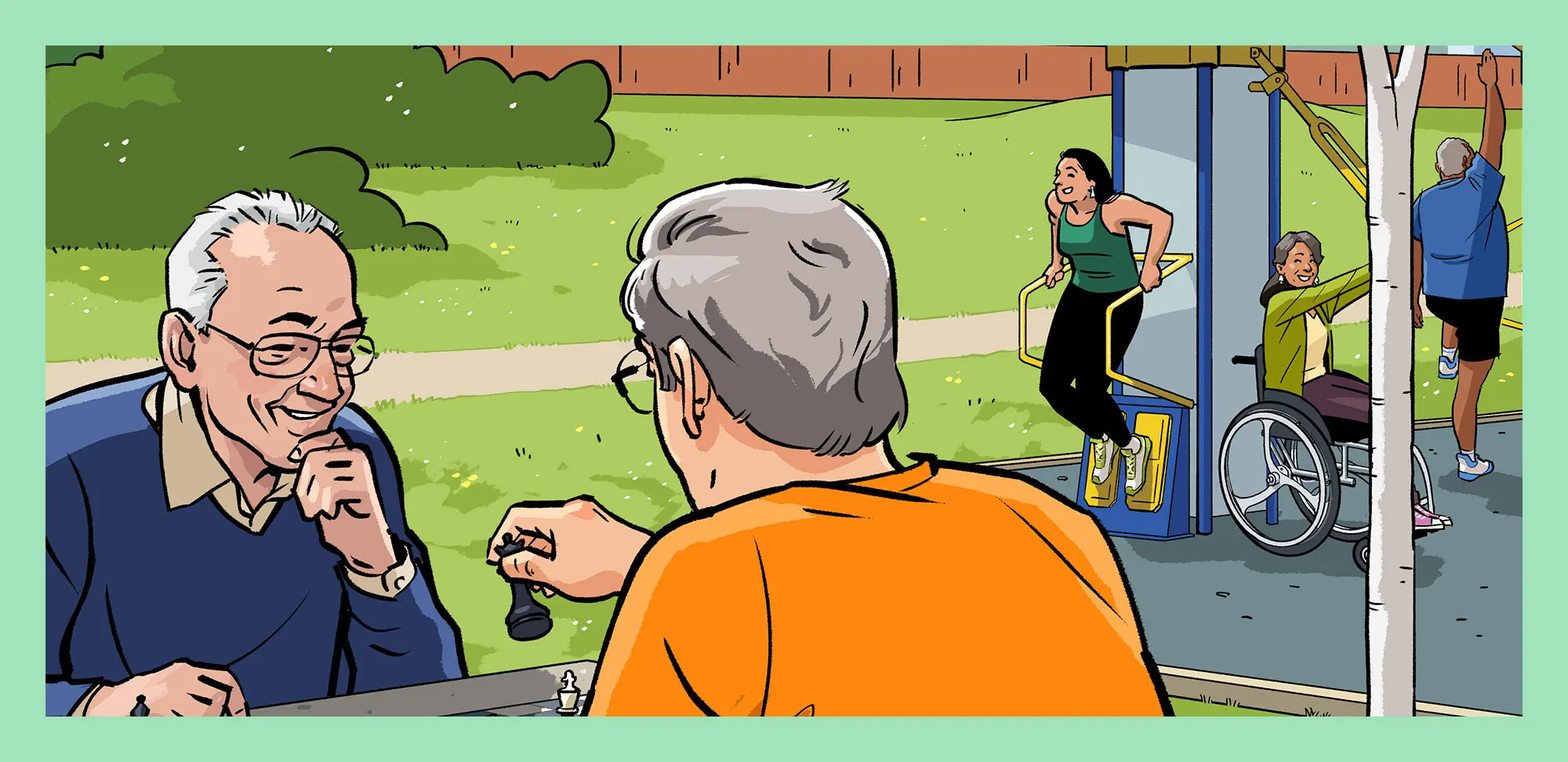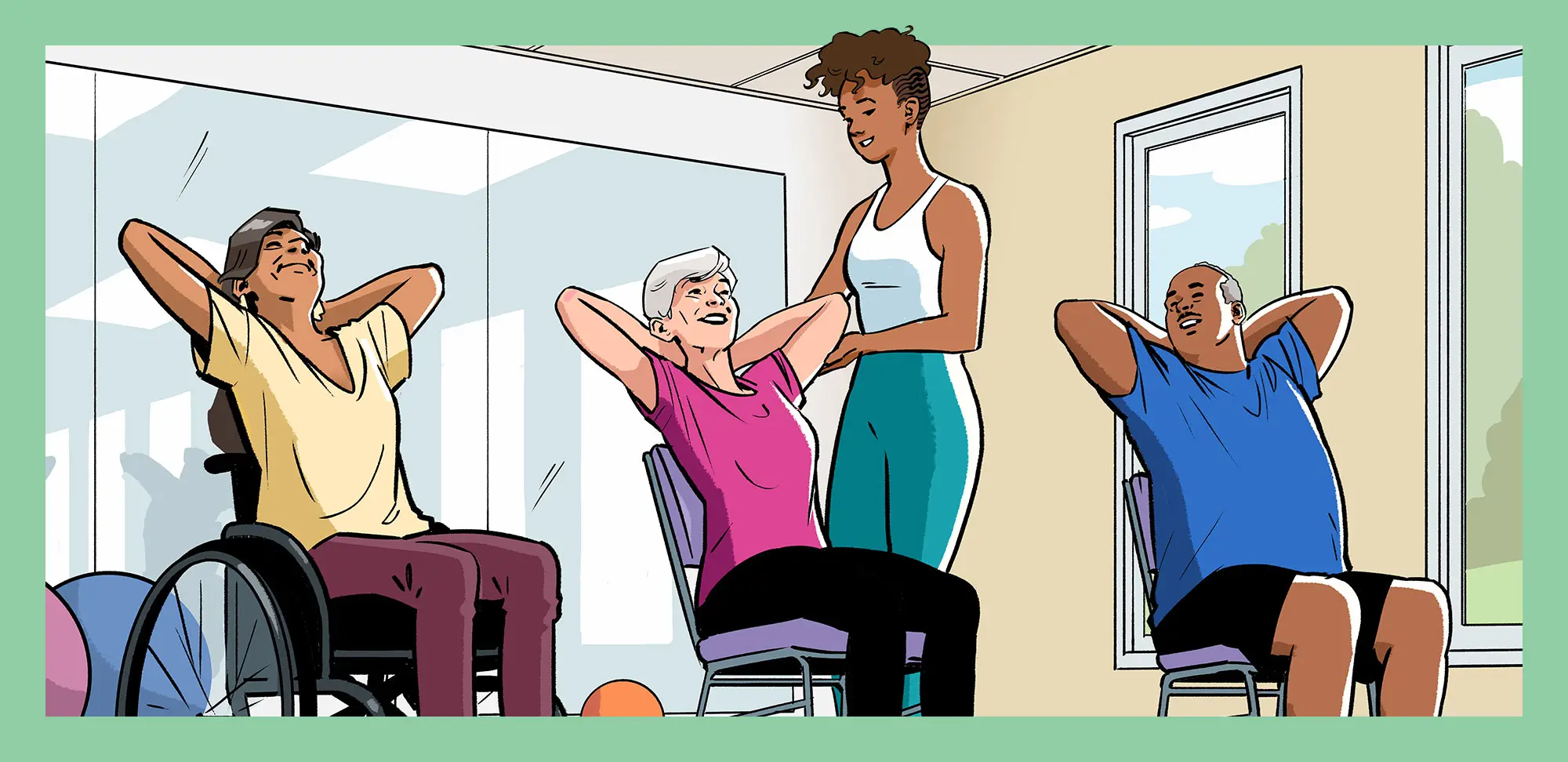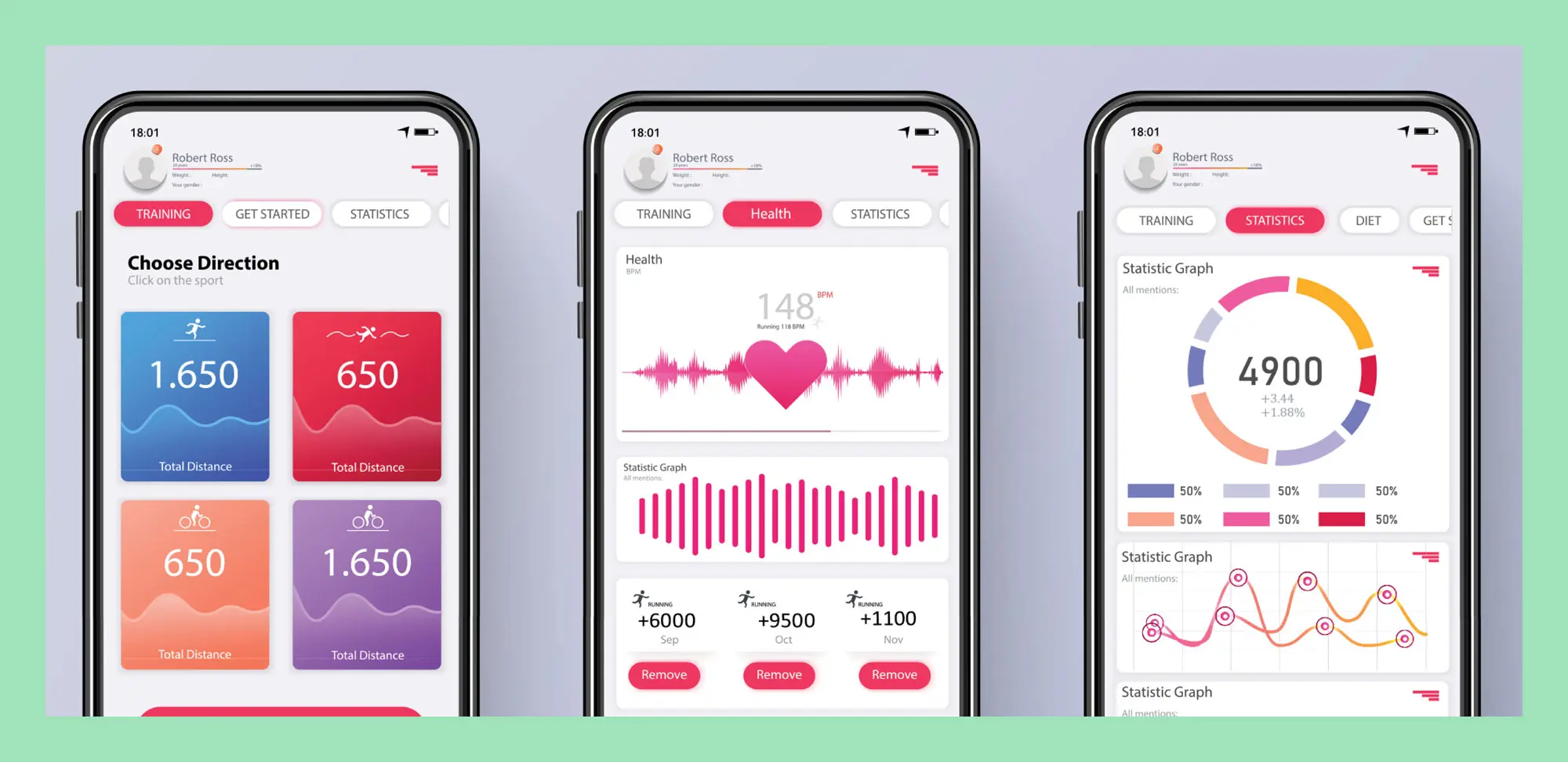You know that regular fitness activity is good news for your heart, muscles and bones. But did you know that a fitness program can reduce the risk of cognitive decline?
Lindsay Nagamatsu, an associate professor in the School of Kinesiology at Western University and a research associate at the Canadian Centre for Activity and Aging, knows that being physically active improves independence and quality of life as we age.
Nagamatsu’s research, which looks at how exercise affects the way older adults process and use information to think, make decisions, plan and remember things throughout the day, has shown that when older sedentary adults started exercising two or three times a week, “there were profound benefits in these individuals,” she says. “And some of them already have mild cognitive impairment, so they’re already on the trajectory towards cognitive decline.”
“While all types of movement are important to supporting older adults as they age,” she says, “my research has shown aerobic and strength training can impact cognition and brain health the most. The stronger we are, the more fit and able we are to perform a physical and mental task. And it’s really never too late to start.”
The Canadian 24-Hour Movement Guidelines for adults 18 to 64 and older recommend an accumulation of 150 minutes of moderate to vigorous aerobic activity every week and strength-training exercises twice a week. Adults 65 and older are encouraged to do physical activities that challenge balance, too.
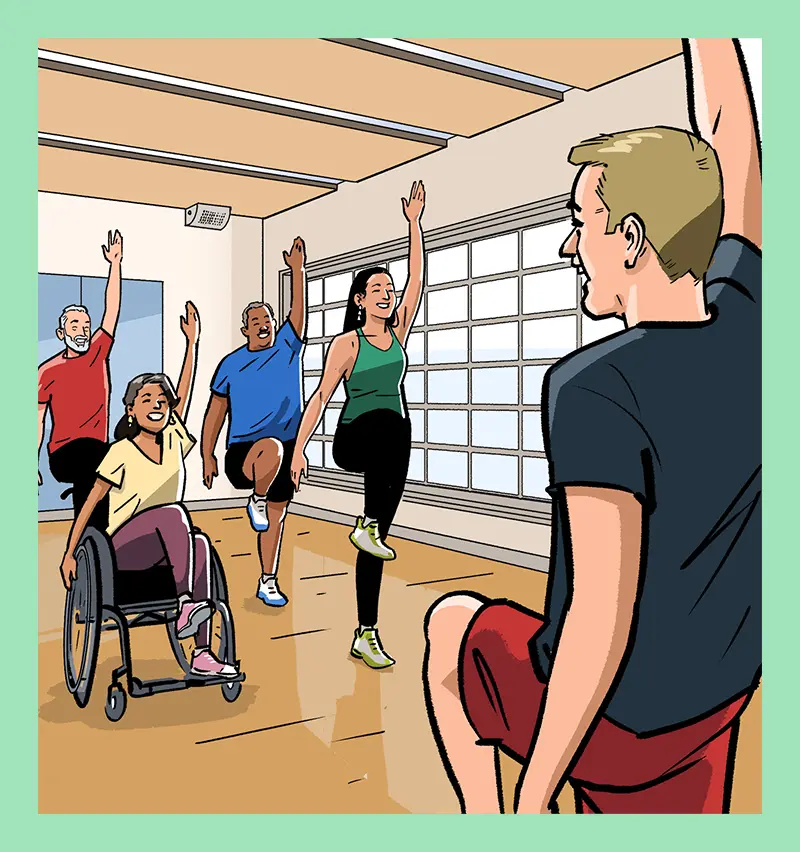
Exercise your body and your brain
When Andrew Schindle leads fitness classes for seniors, he uses choreographed segments for the four important components of fitness: aerobic exercise, strength training, balance work and stretching. These days, he also sprinkles in coordination movements that force participants to think a little more about what they’re doing.
When the arms and legs are going in different directions, for example, it can be a struggle to get the movements right away, says Schindle, who has a degree in kinesiology and teaches at six community centres in Winnipeg. “But after a few tries, something happens with the connection between the mind and body . . . and they’re able to do it.” He says that “challenging the brain like this during physical exercise is an excellent way to support brain health.”
If you have mobility challenges, you’re likely not moving your body as much as you should be, says Jill Moreash, a personal training specialist at Variety Village in Toronto. “If you’re not strengthening your body, your brain is not getting strong and healthy too. Exercise is so important because blood flow to the body and the heart is blood flow to the brain.”
Check with your physician before beginning a new exercise program. If you don’t feel confident on a chair or using a wall, ask someone to stand close by for support.
Core Strength Training
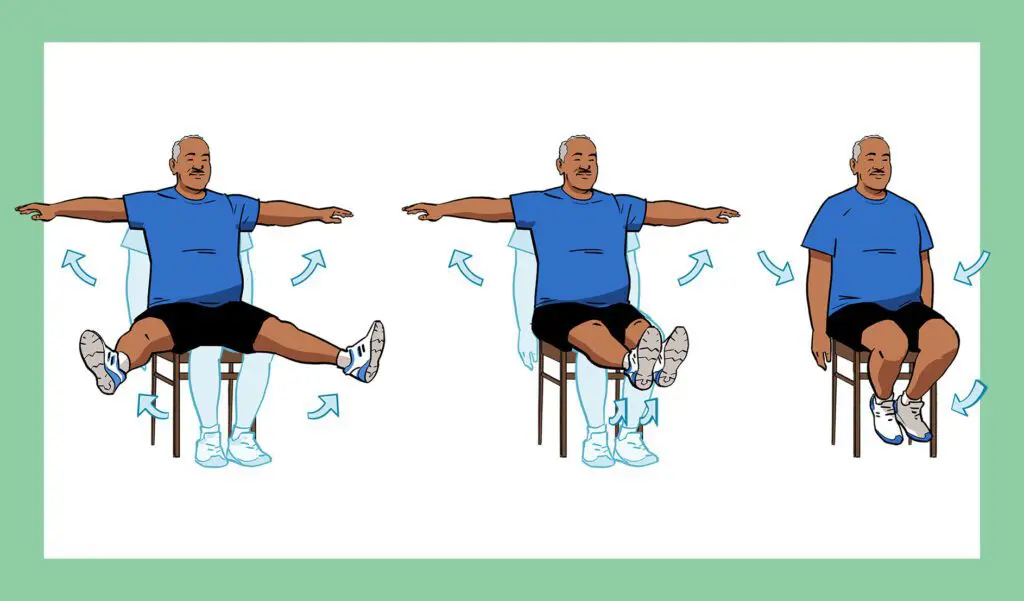
- Jumping Jack in a chair
Sit forward in a chair and keep the spine in a neutral position (soft, not rigid). In unison, slowly open up both arms and legs out to the side — like you’re doing a jumping jack. Pause and return to starting position. Now, again in unison, slowly open both arms out to the side as you open legs out in front, pause, and as you return arms to starting position, bring legs back and tuck them in front of you and under the chair. Repeat those two motions (arms and legs out wide and back, then arms out wide and legs tucked under chair) for 30 seconds. Arms and legs are in the air the whole time.

Modified: One foot on the floor
Using your wheelchair or a stable, firm chair, sit up with a tall chest and your belly button tucked toward your spine in a slight pelvic tilt. Try to stay a little forward in your seat so you are not leaning on the backrest if possible. Keep your knees bent at about 90 degrees and feet about hip-width apart on the floor, with arms down at your sides, and perform these movements slowly.
With your left foot on the floor, move your right leg out to the right side while lifting both arms up and out to the sides to shoulder height. Pause and slowly bring your leg and arms back to starting position. Now keep the right foot on the floor and move the left leg out to the left side while lifting both arms up and out to the sides. Pause and return to starting position.
Next, with your left foot on the floor, extend your right leg out in front while lifting both arms up and out to the sides again. Pause and return to starting position. Then, keeping your right foot on the floor, extend your left leg out in front while both arms open up out to the sides again.
Put the two moves together: both arms out and in while switching alternating legs to the sides and then alternating legs to the front.
Repeat for three to five sets. Focus on keeping your core tight and sitting tall.
Aerobic Exercise

- Three steps and tap
Stand tall and take three steps forward and then tap your heel. Take three steps back and tap your heel. Repeat for 10 seconds.
Take three steps forward and tap to the side with your toes. Then take three steps back and tap to the side with your toes. (You’re switching legs for the tap each time.) Repeat for 10 seconds.
Take three steps forward, lift up your knee and tap it with your hands. Take three steps back and tap the other knee with your hands. Repeat for 10 seconds.
Put all three together. Take three steps forward and tap with your heel, then tap to the side with your toes, then tap your knee with your hands. Take three steps back and tap with your heel, your toes and then tap your knee. Repeat for 10 seconds.
Modified: March and tap or punch in a chair

Using your wheelchair or a stable, firm chair, sit up with a tall chest and your belly button tucked toward your spine in a slight pelvic tilt. Try to stay a little forward in your seat so you are not leaning on the backrest, if possible, with feet about hip-width apart and knees bent at about 90 degrees.
Using a marching motion with knees and arms, do three knee marches and then a heel tap forward, then three more marches with opposite heel tap forward. Switch starting knee each time. (If you cannot use your legs, concentrate on moving your arms only in a marching motion: three march movements, then a punch forward. Switch starting arm each time.) Repeat twice.
Do three marching knees, and then do a toe tap to the side. Then do three marching knees starting with the opposite knee and toe tap to the side with your other foot. Switch legs for the tap every time. (For those not using their legs, do three marching arm motions, then punch to the side. Switch starting arm.) Repeat twice.
Do three marching knees and then tap your raised knee with your hands. Repeat for three more marches and then tap your opposite raised knee. (For those not using their legs, do three marching arm motions, then punch up.) Repeat twice.
Now, put all three together: Do three knee marches and then tap forward with your heel, then tap to the side with your toes, then tap your knee with your hands. (Or do three marching arm motions, then punch forward, side and up.) Then, starting with the opposite knee (or arm), do three march movements and then tap forward with your other heel, side toe tap and then tap your raised knee. (Or punch forward, side and up.)
Repeat the entire sequence for five sets.
Balance Training
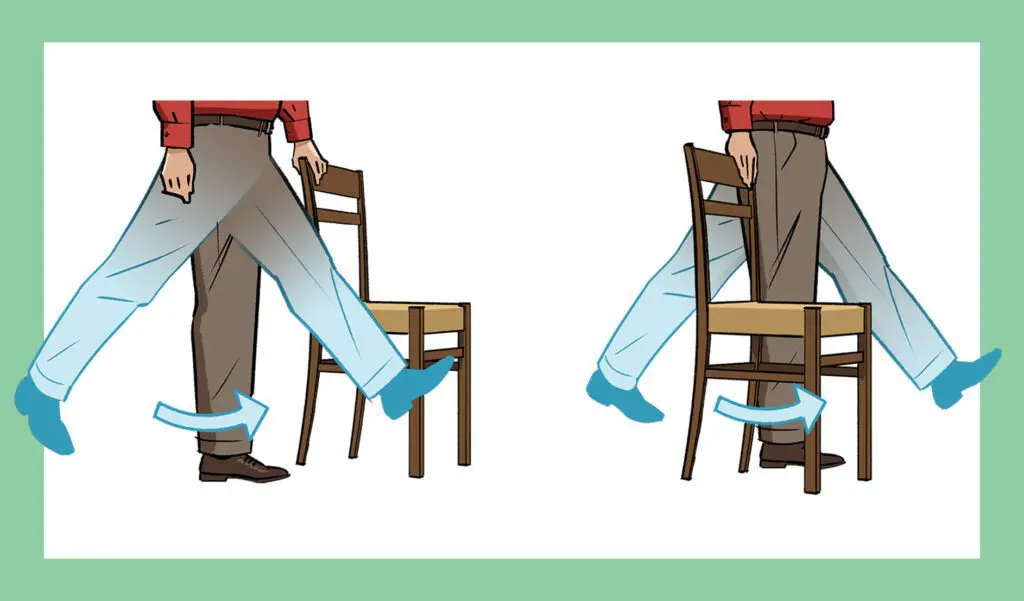
- One-leg balance swing
Stand on your left leg to the right of a chair. Let both hands hang down at your sides but hold on to the chair for balance with the inside hand if necessary. Gently swing the outside leg back and forth like a pendulum. Go as far forward and back as is comfortable. Repeat for 30 seconds. Change sides.
Modified: Sitting balance exercise
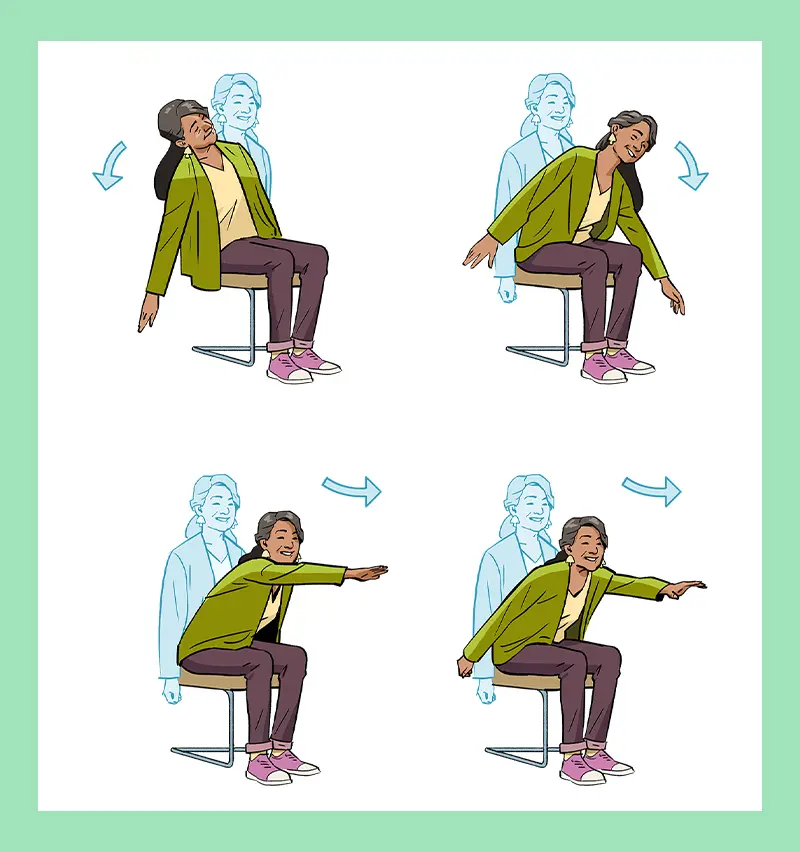
Using your wheelchair or a stable chair, sit up tall with belly button tucked, with knees bent at about 90 degrees and arms resting at your sides. If possible, sit forward in your chair so your back is not against your backrest. Keep your feet on the floor about shoulder-width apart (for a more challenging version, place your feet together to narrow your base of support).
Keeping your chest tall and core tight, slowly lean to the right and reach toward the floor with your right arm. Squeeze the muscles on your left side while returning to your starting position. Slowly lean to the left and reach down with your left arm. Squeeze your right side while returning to starting position. Repeat three to five times.
Next, with a flat back and tight core, lean forward while reaching your right arm forward (as if you are being handed something). Squeeze your glutes (bum muscles) and return to starting position. Then lean forward again while extending your left arm forward. Repeat three to five times.
Put the two moves together. Lean right, then left, then lean forward with right arm, then forward with left arm. Repeat for three to five sets altogether.
Modified: Tandem stance
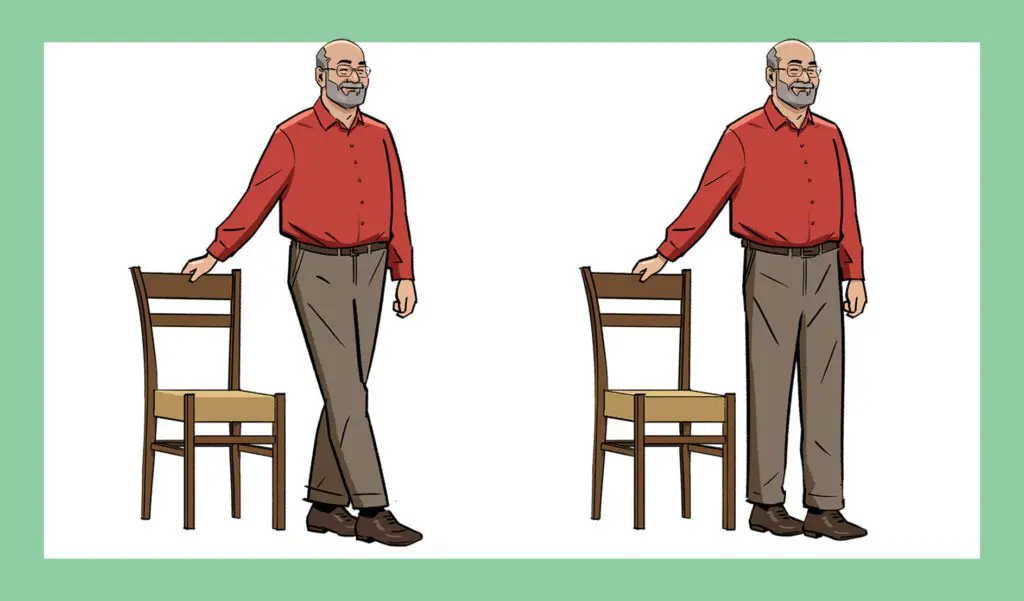
Begin standing near a stable chair or wall for safety and stability if needed. Place one foot directly in front of the other foot (as if on a balance beam), with the toes of your rear foot almost touching the heel of your front foot. Stand tall, knees slightly bent, with more weight on your back leg. Keep your feet as straight as possible, rather than toes turned outward. Your hands can be out for balance or on your hips. Try to hold for 30 seconds. Repeat with the opposite foot in front.
Brain Gym
Brain Gym, a program developed in the 1970s to exercise the brain, includes memory exercises, mind fitness and physical movements to increase brain function and prevent possible memory loss.
“While reading and puzzling are good ways to exercise the brain,” says Jill Hewlett, a Toronto brain fitness and wellness authority who’s an accredited Brain Gym instructor, “my main training is to teach people integrative movements that will help their brains’ functioning.” For example, while research shows that walking 15 to 20 minutes at least once a day is good for the brain, Hewlett recommends walking on uneven ground, if possible, because the brain has to adjust more to that footing.
In Brain Gym specifically, many activities for adults copy movements done by infants as they learn to coordinate eyes, ears, hands and the body. For example, the cross crawl — alternately moving one arm toward the opposite leg and then vice versa — helps to support balance within the body. While these activities improve physical abilities, Hewlett says, they also help improve mental abilities such as focusing, attending to something and making better choices.
Visit jillhewlett.com for more information.
